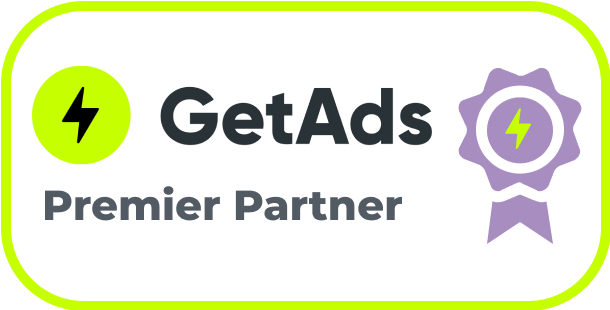Welcome to the world of digital marketing, where the landscape is ever-changing, and the competition is fierce. займ 10000 на карту. In this fast-paced environment, the key to success lies in your ability to adapt and optimize your advertising efforts continually.
In this comprehensive guide, I’ll share my top 10 ad optimization tips that will not only boost your ROI but also set you on the path to advertising success.
These strategies are not just theories; they are proven techniques backed by real-world data and insights.

The Foundation – Understanding Your Audience
The journey to maximizing your ROI begins with understanding your audience inside out. Your audience is not just a group of potential customers; they are the heart and soul of your advertising efforts.
To optimize your ads effectively, you need to know who your audience is, what their interests are, where they spend their time online, and what problems your product or service can solve for them. Here’s how to get started:
Conduct Thorough Audience Research
Audience research is the foundation of successful advertising. Start by gathering demographic data such as age, gender, location, and income level. Then dig deeper to uncover psychographic information, including interests, values, and pain points. Tools like Google Analytics and social media insights can provide valuable data to kickstart your research.
Create Detailed Buyer Personas
Once you have collected sufficient data, create detailed buyer personas. These personas are fictional representations of your ideal customers and should include their demographics, behaviors, goals, challenges, and even a fictional name and photo. Having these personas will help you tailor your ads to resonate with specific segments of your audience.
Utilize Analytics Tools
Analytics tools such as Google Analytics, Facebook Insights, and Adobe Analytics are essential for gaining insights into your audience’s online behavior. They can help you track website visits, engagement metrics, and conversion rates. Regularly review these analytics to identify trends and adjust your ad strategies accordingly.
The Power of A/B Testing
A/B testing, also known as split testing, is a powerful technique for optimizing your ads. It allows you to compare two or more variations of your ad (such as different headlines, images, or calls to action) to determine which one performs better. Here’s how to harness the power of A/B testing:
Start with Small Changes
When conducting A/B tests, it’s essential to start with small changes. Testing too many variables at once can make it challenging to pinpoint what’s driving the improvement or decline in performance. Begin with changes like headline variations, ad copy tweaks, or different images.
Run Controlled Experiments
To ensure accurate results, run controlled experiments. This means that you should only change one element of your ad at a time while keeping all other factors constant. For example, if you’re testing a new headline, use the same ad copy, image, and targeting for both versions of the ad.
Analyze and Iterate
After running your A/B tests, analyze the results. Look for patterns and trends in the data. Which version of the ad had a higher click-through rate (CTR)? Which one led to more conversions? Use these insights to make informed decisions and iterate on your ads. Over time, this iterative approach can lead to significant improvements in ROI.

The Heart of Conversion – Landing Page Optimization
Your ad’s job is to drive traffic to your landing page, but it’s your landing page’s job to convert that traffic into customers. A poorly optimized landing page can be the Achilles’ heel of your ad campaign. Here’s how to optimize your landing pages for maximum conversion:
Craft a Compelling Headline
Your landing page’s headline is the first thing visitors see, and it should grab their attention immediately. Make it clear, concise, and aligned with the ad that brought them to the page. Use persuasive language that highlights the benefits of your product or service.
Create Persuasive Copy
Your landing page copy should be concise, persuasive, and focused on the visitor’s needs and pain points. Clearly explain what your product or service does and how it can solve the visitor’s problem. Use bullet points and subheadings to break up the text and make it more scannable.
Include a Strong Call to Action (CTA)
Your landing page should have a clear and compelling call to action (CTA). Whether it’s “Sign Up Now,” “Get Started,” or “Request a Quote,” your CTA should guide visitors toward taking the desired action. Use contrasting colors and placement to make the CTA button stand out.
Optimize for Mobile Users
With an increasing number of users accessing websites on mobile devices, it’s crucial to optimize your landing pages for mobile. Ensure that your pages are responsive and load quickly on smartphones and tablets. Test how your landing pages appear on various mobile devices to provide a seamless user experience.
Re-Engaging Lost Leads with Retargeting
Not every visitor who clicks on your ad will convert on their first visit. This is where retargeting comes into play. Retargeting, also known as remarketing, involves showing targeted ads to users who have already interacted with your website or previous ads. Here’s how to make the most of retargeting:
Segment Your Audience
Rather than using a one-size-fits-all retargeting approach, segment your audience based on their behavior on your website. For example, you can create segments for visitors who abandoned their shopping carts, those who viewed specific product pages, or those who signed up for your newsletter. Tailor your retargeting ads to each segment’s interests and actions.
Offer Incentives
One effective way to re-engage lost leads through retargeting is by offering incentives. Consider providing discounts, exclusive offers, or free trials to incentivize users to return and complete the desired action. Make sure to highlight these incentives in your retargeting ads to grab their attention and entice them back to your website.
Frequency and Ad Creative
When implementing retargeting campaigns, strike a balance with ad frequency. Bombarding users with the same ad too frequently can lead to ad fatigue and a negative user experience. Set frequency caps to limit the number of times a user sees the same ad in a given time frame. Additionally, refresh your ad creative regularly to prevent ad blindness and maintain user engagement.
You can also try to partner up with an ad creative agency that manages the technical side of campaigns. GetAds is one of the market leaders in the world ad creative management agencies in North America.

Mastering the Art of Keywords
Keyword research is not just reserved for search engine optimization (SEO); it’s a crucial aspect of ad optimization as well. Choosing the right keywords can significantly impact the performance of your ads. Here’s how to harness the power of keywords:
Conduct Thorough Keyword Research
Start your keyword optimization journey by conducting thorough keyword research. Identify relevant keywords and phrases that align with your target audience’s search queries. Tools like Google Keyword Planner, SEMrush, and Moz can help you discover high-converting keywords with reasonable search volumes.
Incorporate Keywords Strategically
Once you’ve identified your target keywords, strategically incorporate them into your ad copy and landing pages. Ensure that your keywords align with the content and intent of your ads. This alignment not only improves ad relevance but also boosts your Quality Score on platforms like Google Ads, which can lead to lower costs and higher ad placements.
Negative Keywords
Don’t overlook the importance of negative keywords. Negative keywords are terms you want to exclude from triggering your ads. By carefully selecting negative keywords, you can prevent your ads from showing to irrelevant audiences and wasting your ad budget.
Crafting Compelling Ad Copy
Your ad copy is your first impression on potential customers, and it can make or break your campaign. Crafting compelling ad copy that resonates with your audience is a skill that every digital marketer should master. Here’s how to do it effectively:
Keep It Concise and Relevant
In the digital world, attention spans are short, so keep your ad copy concise and to the point. Focus on the most critical information and benefits of your product or service. Ensure that your ad copy is highly relevant to the keywords and audience you’re targeting.
Highlight Benefits and Solutions
Rather than just listing features, highlight the benefits your product or service offers and the solutions it provides to your audience’s problems. Speak directly to your audience’s pain points and demonstrate how your offering can improve their lives or solve their challenges.
Strong Calls to Action (CTAs)
According to a report, emails with a single call to action increase clicks by 371% and sales by 1617%.
Your ad copy should include a clear and compelling call to action (CTA). The CTA is the action you want your audience to take, such as “Shop Now,” “Learn More,” or “Request a Demo.” Make your CTA stand out visually and use persuasive language that encourages immediate action.
Optimizing for the Mobile-First Era
With mobile devices accounting for a significant portion of internet traffic, optimizing your ads and landing pages for mobile users is no longer optional. It’s essential for success in the digital landscape. Here’s how to ensure your campaigns are mobile-friendly:
Responsive Design
According to Google’s Think with Google, 74% of users are more likely to return to a mobile-friendly website.
Ensure that your website and landing pages have responsive designs that adapt seamlessly to various screen sizes and orientations. Responsive design provides an optimal user experience by adjusting the layout and content to fit the user’s device.
Mobile Page Speed
Mobile users expect fast-loading pages. Conduct regular speed tests using tools like Google’s PageSpeed Insights to identify and address any performance issues. Compress images, reduce server response times, and minimize unnecessary scripts to improve page speed.
Mobile-Optimized Ads
When creating mobile ads, consider the unique characteristics of mobile devices. Use shorter ad copy that gets straight to the point, and ensure that your landing pages are mobile-optimized for a seamless transition from ad to conversion.

Monitoring and Adjusting Ad Spend
One of the most common mistakes in digital advertising is “set it and forget it.” Your ad campaigns require continuous monitoring and adjustments to maximize ROI. Here’s how to manage your ad spend effectively:
Set Clear Objectives
Before launching any campaign, define clear objectives and key performance indicators (KPIs). Whether your goal is to increase website traffic, generate leads, or boost sales, having specific objectives will guide your ad optimization efforts.
Monitor Performance Metrics
Regularly monitor key performance metrics such as CTR, conversion rate, click-through rate, and return on ad spend (ROAS). Use analytics tools like Google Analytics, Facebook Ads Manager, or your advertising platform’s insights to track performance.
Adjust Budget Allocation
Allocate your budget based on the performance of your campaigns and keywords. Shift more budget towards campaigns that are delivering positive ROI and generating conversions. Conversely, consider pausing or reducing spend on underperforming campaigns or keywords.
Experiment with Bidding Strategies
Experiment with different bidding strategies, such as manual bidding, automated bidding, or target return on ad spend (ROAS). Test which strategy works best for your specific goals and adjust accordingly.
Utilize Ad Extensions
Ad extensions are additional pieces of information that can be added to your ad, providing more value to potential customers. These extensions not only make your ads more informative but can also increase click-through rates and conversions. Here are some ad extensions to consider:
Site Link Extensions
Site link extensions allow you to add additional links to specific pages on your website within your ad. Use them to direct users to relevant sections of your site, such as product categories or special offers.
Callout Extensions
Callout extensions provide extra text to highlight unique selling points or promotions. Use them to emphasize free shipping, discounts, or other enticing offers.
Location Extensions
If you have physical locations, enable location extensions to display your business address, phone number, and a map directly in your ad. This is especially valuable for attracting local customers.
Call Extensions
Call extensions allow mobile users to call your business directly from the ad. It’s a convenient feature for potential customers who prefer speaking with a representative before making a purchase. Ensure that your call extension includes a clickable phone number.
Price Extensions
Price extensions showcase your products or services with their respective prices. This extension is particularly useful for e-commerce businesses and can help users quickly compare options.
Structured Snippet Extensions
Structured snippet extensions allow you to highlight specific aspects of your products or services. Use them to showcase product categories, brands, or unique features that set your offerings apart from the competition
Staying Ahead with Industry Trends
The digital marketing landscape is in a constant state of evolution. To stay competitive and maximize your ROI, it’s crucial to stay informed about industry trends and updates to advertising platforms. Here’s how to ensure you stay ahead of the curve:
Attend Webinars and Conferences
Webinars and conferences provide an excellent opportunity to learn from industry experts, discover new strategies, and network with peers. Look for webinars and events relevant to your niche and set aside time to attend them.
Read Industry Blogs and Publications
Stay updated on the latest trends and insights by regularly reading industry-specific blogs and publications. Many leading marketing professionals and organizations share valuable knowledge through blog posts, articles, and whitepapers.
Follow Industry Leaders on Social Media
Follow industry leaders and experts on social media platforms like LinkedIn, Twitter, and Instagram. They often share valuable tips, insights, and the latest news in the field of digital marketing. Engaging with their content can also help you expand your network.
Experiment with Emerging Platforms
Keep an eye on emerging advertising platforms and technologies. While Google Ads and Facebook Ads are dominant players, new platforms and features are continually emerging. Be open to experimenting with these platforms to see if they can provide additional opportunities for reaching your target audience.
Conclusion
In conclusion, ad optimization is not a one-time task; it’s an ongoing process that requires dedication, adaptability, and a data-driven approach. By understanding your audience, conducting A/B tests, optimizing your landing pages, and staying current with industry trends, you can significantly boost your ROI and stay competitive in the dynamic world of digital advertising.
Remember that every business is unique, so these tips may require some customization to fit your specific goals and objectives. The digital marketing landscape will continue to evolve, presenting both challenges and opportunities. By implementing the strategies outlined in this guide and staying committed to optimizing your ad campaigns, you’ll be well-equipped to achieve remarkable results and drive sustainable growth in your digital advertising endeavors.







